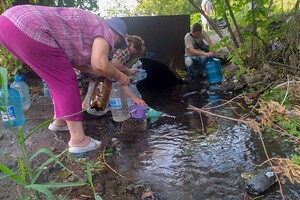War, poverty and climate change contribute to the spread of the disease.

The incidence of cholera increased sharply this year and the disease could make an “unexpected comeback” as wars, poverty and climate change create favorable conditions for it, the World Health Organization says. The head of the WHO, Tedros Adhanom Ghebreyesus, called on countries to take measures that can curb the deadly disease, reports Forbes.
According to him, since the beginning of the year, 27 countries have reported cases of cholera, including Syria, where 10,000 cases of the disease were recorded in six weeks. Ghebreyesus noted that disease outbreaks are becoming more deadly and more frequent. Available data show that the death rate this year is almost three times higher than the average for the last five years.
Read also: There is a risk of cholera spreading in Mariupol – Cousin
Cholera is caused by eating or water contaminated with bacteria, which are often transmitted with the feces of an infected person. The disease spreads rapidly in areas with poor sanitation or inadequate sewage treatment.
If left untreated, the disease can kill within hours. However, most of the symptoms of the disease do not appear at all or appear in a mild form. Serious symptoms occur in one in 10 patients and include watery diarrhea, vomiting and muscle spasms.
Cholera is easily prevented with vaccination and treated with oral rehydration solution (or IV fluids and antibiotics in very severe cases). But according to Gerbreyesus, the reality is that “many do not have access to these simple remedies.”
What is known about cholera
Cholera is one of the worst diseases in human history and is still responsible for the majority of deaths in some parts of the world. It has caused seven pandemics over the past 200 years. It was once called the “blue death” because of the skin color of dehydrated people.
The disease spreads quickly within communities and often occurs after a natural disaster, when people are forced to live in cramped conditions and drinking water sources are destroyed. So, in Mariupol, which was besieged and then occupied by Russian troops, in June, 10-15 cases with symptoms of cholera and dysentery were recorded per day. not enough to prevent a possible epidemic. He urged vaccine manufacturers to increase production.
In addition, the head of the WHO noted that “the disease thrives at the expense of poverty and conflicts,” and climate change “worsens” it. Extreme weather events such as hurricanes, cyclones and droughts limit access to drinking water and “create an environment for the spread of cholera”.
How to avoid infection
According to the US Centers for Disease Control and Prevention, frequent hand washing, safe disposal of feces, and water disinfection are essential in areas at risk of cholera. It can be boiled, filtered, chlorine or iodine tablets can be added. Purified water should be used for washing dishes, brushing teeth, making ice and food.
In addition, you should avoid eating undercooked or undercooked meat and seafood, unpeeled raw vegetables and fruits.
Related video
Important! This publication is based on the latest and current scientific research in the field of medicine and has an exclusively general informational character. The publication cannot be the basis for establishing any diagnoses. If you are sick or need a diagnosis, see a doctor!




